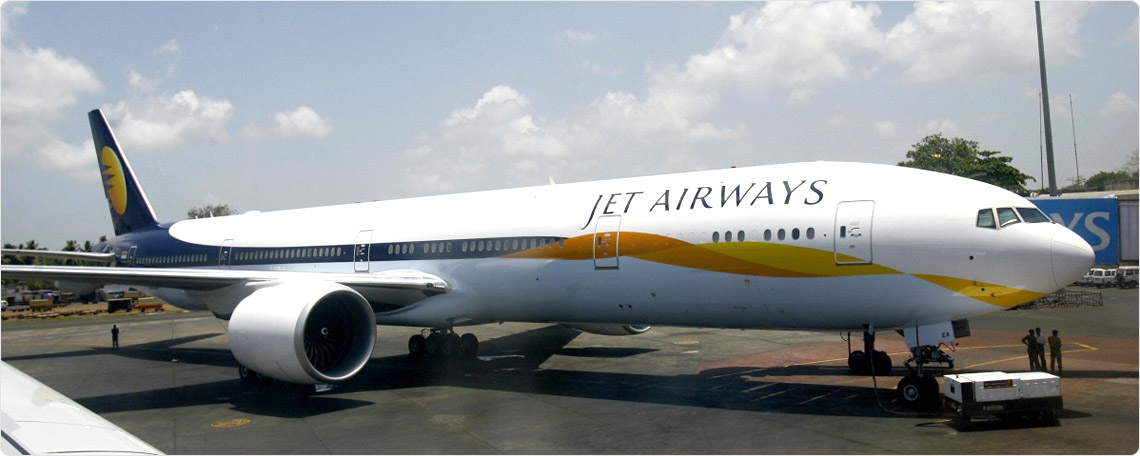stockaxis Market Intelligence (Commentary for April 2019; Outlook for May 2019)
May 29, 2019
|
We are pleased to present to you our monthly market commentary and outlook for the forthcoming month. The ‘stockaxis’ Market Intelligence’ is a quick update on the markets for the month gone by and our view for the next month. Use our sharp and crisp synopsis to continue building your wealth!
Global Trends
- Indian GDP growth for the current fiscal year pegged at 7.2% by the Asian Development Bank (ADB).
- Fitch opines stable outlook on India for the 13th year in a row; expects growth of 6.8% in FY19 and 7.1% in FY20 thanks to accommodative monetary policy, government spending and easing of bank regulations.
- India receives the largest amount of remittances in the world at US$ 79 billion in 2018, according to the World Bank.
- World Bank pegs India’s growth at 7.5% in FY 2019, driven by strengthening of investments, improved export performance and resilient consumption.
- IMF’s fiscal monitor report recognizes benefits of digitalization in reducing fraud; states that India saved 17% in spending with no decline in distributed benefits.
- Use of mobile devices and tech-based solutions, and banks heavily investing in tech are factors that will make FinTech a USD 305.7 billion market by 2023, according to a report by Research and Markets.
- Global finance leaders gathered for spring meetings of IMF and World Bank agree that world economic growth can pick up in the second half of 2019 helped by the world’s central banks.
Domestic Trends
- NRIs are purchasing luxury homes as well as affordable homes for rental income, suggests a survey by Anarock.
- Markets and Markets report suggests that the global financial analytics market size will grow at a CAGR of 10.7%, from USD 6.9 billion in 2018 to USD 11.4 billion by 2023. The growth will be led by the need for reducing planning and budgeting cycles as well as emergence of IT applications and infrastructure.
- IATA says India saw a double-digit growth in domestic air passenger traffic for the 54th consecutive month in February. Growth in the number of airport pairs and a ‘solid’ economic backdrop led to sustained rise in traffic.
- Housing soared to 58% between January-March 2019, with Bengaluru and Hyderabad registering 33% rise in sales due to sops in the interim budget, GST rate cuts and lowering of home loan rates, according to Anarock.
- Forex reserves rose by more than US$ 5 billion to reach US$ 412 billion mark helped by the first ever dollar-rupee swap conducted by RBI in the last week of March.
- Indian MSMEs have the potential to create 1 crore jobs in 4-5 years if they focus on developing enterprises in certain segments by partial import substitution, says a report by Nomura Research Institute.
- Indian steel demand is set to grow by over 7% in FY19 and 20, according to the Indian Steel Association. Drivers include construction, capital goods and railways sectors.
- All India Sugar Trade Association data indicates sugar exports rose to 17.44 lakh tonnes with raw sugar accounting for nearly 8 lakh tonnes of the exports.
- RBI data shows that banks registered a double-digit credit growth of 13.24%, while deposits grew by 10.03% at the end of FY19; this is the second consecutive year of growth for banks.
- Artificial Intelligence (AI) in BFSI market is set to grow more than 40%, with banks accounting for more than 50% of AI in the BFSI market, according to a report by Global Market Insights.
- India’s services exports rose 5.5% to US$ 15.6 billion in February 2019; meanwhile imports were down 3.3%, according to RBI data.
- FMCG industry saw a growth of 13.8% in 2018 and is projected to grow at 11-12% in 2019, according to a report by Nielsen. A conducive macro-economic environment, base effect and rural consumption growth are the likely drivers.
- Office space leasing rose in January-March 2019 to 12.8 million sq. ft in nine major cities in India, according to CBRE. Tech corporates remained the key lessees.
- EPFO numbers show that job creation trebled in February at 8.61 lakh; the highest job creation was observed in January 19 at 8.94 lakh jobs.
- Pharmaceutical exports rose by 11% to USD 19.2 billion in 2018-19 as demand rose in North America and Europe, according to the Commerce Ministry.
- Ultra High Net Worth Individuals (UHNWIs) are confident about the political and economic situation in India with 28% of respondents in a Knight Frank survey acknowledging a generally positive outlook for the country in 2019.
- RBI data shows that advances to agriculture and allied activities rose by 7.5% in February while non-food bank credit rose by 13.2% in Feb 19. Credit to industry rose 5.6% in the same period.
- The Indian Rupee strengthened vis-à-vis the dollar; it was at INR 66.4367 on 1 April 2019 against INR 69.30 on 1 April 2019.
Market Trends
- FIIs recorded a net inflow of Rs 12,749.55 crore in April against Rs. 33,980.56 crore in March 2019.
- The Nifty closed at 11,748.15 on 30th April 2019 against 11623.90 on 29th March 2019, having risen by 124.25 points over the previous month.
- The Nifty 50 P/E ratio was at 29.33 at end-April 2019 against 29.01 at end-March 2019. The average P/E ratio for the past 12 months is 26.84.
Highlights
- The Good: Economic growth momentum to continue, FII inflows, strengthening rupee, normal monsoons expected
- The Bad: Global trade slowdown, election uncertainty
stockaxis’ Outlook for May 2019
- Indian shoppers’ online spending is expected to rise from the current Rs. 12,800 per shopper per year to Rs. 25,138 by FY 30.
- 62% of Indian online shoppers bought apparel online in the past year.
- 60% of Indian online shoppers bought electronics online in the past year.
India – Consumer Spending

Source: www.ibef.org
Consumption
Online retailing has had a major impact on Indian consumers; there is a growing trend of online retail across segments, but particularly in electronics and apparel. Indian online shoppers spend close to Rs. 12,800 per shopper per year and this number is expected to rise to Rs. 25,138 by FY 30. It is estimated that online retail, which currently constitutes 25% of organized retail in the country, will make up 30% in FY 30.
In terms of segments, food and grocery have seen a rise in online spending, where convenience is the main factor. Indian consumers also tend to purchase home care and personal care products online. As health awareness rises among customers, there is an increasing willingness to buy natural variants of skin care, health and oral care products. Apparel is another area where Indians have taken to shopping online with 62% having made a purchase online in the past year. Interestingly, in footwear, men made the most purchases. Electronics segment is the most impacted by online retail, with 60% of consumers having shopped for electronics online due to heavy discounts and cashbacks available online.
The trend towards online shopping is due to both discounts as well as convenience, although data indicates that convenience is most important. Even though currently online retail constitutes just 3% of total (organized/unorganized) retail in India, it is expected to rise to 8% by 2030 while the overall rise in retail in India will grow by 9% by FY30. Busy lifestyles, changing consumer habits and a focus on convenience means that Indian online retailing has become mature. There are expectations of new major entrants to the sector as well, which may lead to further proliferation of internet retailing.
- AC penetration is set to touch 7-8%. South India saw AC sales growth of 200% month-on-month.
- The Indian fan market is expected to growth at 15% CAGR over the next 5 years.
India – Consumer Confidence

Cooling appliances
The ordeal of the Indian summer is about to set in. This is a time when demand for goods to stave off the heat picks up full steam. Even though the Indian air conditioner market is still nascent, AC penetration is set to touch 7-8%. In the current year, a delayed onset of summer has resulted in flat or dipped sales of air conditioners in India by 30-40% in March; however, South India has seen robust air conditioner sales where month-on-month sales grew by 200%. Rising penetration of units, urbanization and high disposable incomes are drivers of sales.
The fan market is seeing a preference for products with innovative features. Major Indian brands of fans have been launching products in the premium segment, which include features like remote controls, improved aesthetics and powerful motors. The fan market in India is worth nearly Rs. 10,000 crore and is expected to clock compounded annual growth rate (CAGR) of 15% over the next 5 years.
A large part of the country is tropical where cooling appliances are required year-round. Increase in purchasing power of the consumer and availability of financing options mean the sector can generate significant growth.
Meanwhile the market for refrigerators, which slowed down in Q4FY19, has picked up pace in the last week of March and April. Financing continues to account for more than 50% of transactions and this trend will continue to dominate for the foreseeable future.
- The Cables and Wires (C&W) segment saw 23%+ CAGR to reach 14.5 million km in FY 14-18.
- The segment is expected to double over FY 18-23 to Rs. 1,03,300 crore.
Cables and Wires
The Cables and Wires (C&W) segment has seen a CAGR in excess of 23% and reached 14.5 million km in the period between FY 14-18. It is expected that this segment will double over FY 18-23 to Rs. 1,03,300 crore. The drivers have been the government push termed as ‘power for all’ and affordable housing mission ‘housing for all by 2022’. Construction of railways is also expected to pick up pace with electrification and building of high-speed railway projects, a driver for growth of cables. Possible demand drivers are also electrical vehicles (EVs), which need more than 3 times the amount of wiring that conventional vehicles do. The sector anticipates higher revenues as there is more demand for high voltage cables and housing wire consumers are also opting for premium and niche products. Consumers who are more aware about safety now prefer branded cables and their involvement in purchases has risen sharply. As Indians become more upwardly mobile, there is a trend of urbanization and nuclear families on the rise, which in turn, is feeding demand for housing and electrical appliances. We can expect significant upside for the sector based on various government policies and schemes, and general trends observed in the country’s demography.
- The Indian aviation industry can witness 1 billion trips with a fleet of more than 2,000 aircraft by 2040.
- DGCA numbers show that 354.53 lakh passengers were carried by India’s airlines in January-March 2019, indicating growth of 4.92% over the same period last year.
Indian Aviation
India’s domestic passenger traffic grew by a meagre 0.1% YoY (year-on-year) in March 2019 as the aviation industry experienced severe disruption from ticket cancellations by the troubled Jet Airways. Adding to the woes of Indian airlines was the grounding of the fleet of Boeing 737 Max aircraft, which led to further capacity constraints. Apart from the trouble facing individual airlines, there are other challenges for the aviation sector in India like shortage of skilled manpower and increasing air fares, which are limiting domestic passenger numbers. However, Indian low-cost carriers have seen growth and should bottlenecks be removed, the Indian aviation industry can witness 1 billion trips with a fleet of more than 2,000 aircraft by 2040. Even though the data for March 2019 is weak, the trend of growth in domestic passenger numbers continues as evidenced by data released by Directorate General of Civil Aviation. Numbers released by the DGCA show that between January and March 2019, 354.53 lakh passengers were carried by India’s airlines compared with 337.90 lakh in the same period last year indicating growth of 4.92%. The grounding of Jet Airways means that its competitors have gained significant advantages and they are already the most valued airline stocks globally. India’s fast-growing aviation market needs the addition of nearly 45-50 planes each year and now due to the increased demand-supply gap, existing airlines will have to add at least 150 planes this financial year, out of which 100 will be added by the main competitors of Jet. Thus, there are significant opportunities still to be explored by investors in this sector.
We, at stockaxis, are constantly on the lookout for great businesses run by honest promoters that are available at the right price with sufficient margin of safety. Our stringent stock selection guidelines and clearly stipulated entry and exit points make equity investing a ‘rich’ experience for our investors!




